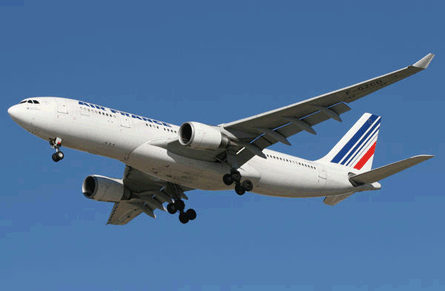French investigators have disclosed that the missing Air France Airbus A330's ACARS communication system transmitted 24 error messages ahead of the flight's disappearance on 1 June.
Fourteen of those messages, says the Bureau d'Enquetes et d'Analyses, were sent within the space of one minute, from 02:10UTC to 02:11UTC.
At a briefing in Paris today the BEA confirmed that the ACARS messages showed "inconsistencies" between measured velocities and indications of systems failures including the autothrust and autopilot.
It said the transmission of routine ACARS signals every 10min during the flight would give the inquiry a degree of certainty about its track.
But BEA director Paul-Louis Arslanian cautioned over the value of the error signals received, stating that they were "not designed for investigations" and only gave an indication as to the status of particular systems.
Arslanian says that while a connection between the signals and the loss of flight AF447 "would appear probable", there was no confirmation of "causality between the messages and the accident".
The BEA, he adds, is still collating information including radar data from Brazil while the search effort continues to locate the flight-data and cockpit-voice recorders.
 |
|---|
© Nathan Zalcman/AirTeamImages.com |
During the briefing a representative of France's Service Hydrographique et Oceanographique de la Marine (SHOM) explained the scale of the task in finding the sonic beacons attached to each recorder.
He says there is "limited knowledge" of the terrain in the area - east of the mid-Atlantic dorsal chain - while ocean currents since the day of the accident have been drifting eastwards. The beacons transmit a 37.5kHz signal with an intensity of 160dB but, given they could be at 4,000m depth, the search teams on the surface would have to be "almost on top" of them to pick this up.
Arslanian also points out that the BEA "cannot guarantee" that the beacons have not separated from the recorders.
While the region in which the aircraft disappeared, the Intertropical Convergence Zone, is characterised by cumulonimbus cloud and thunderstorm activity as a result of unstable wind patterns, Meteo France deputy director Alain Ratier told the briefing that the weather systems on 1 June were "normal" with "no anomalies".
"If you look at the three or four days surrounding the accident, there was more intense development before and after than on the night of the flight itself," he says, adding that at 02:15UTC the growth phase of the local cumulonimbus had already passed and the clouds were in the "lower end" of their cycle.
"We cannot conclude that this situation was exceptional," he says. "There was no unusual intensity or strength."
Source: Air Transport Intelligence news























